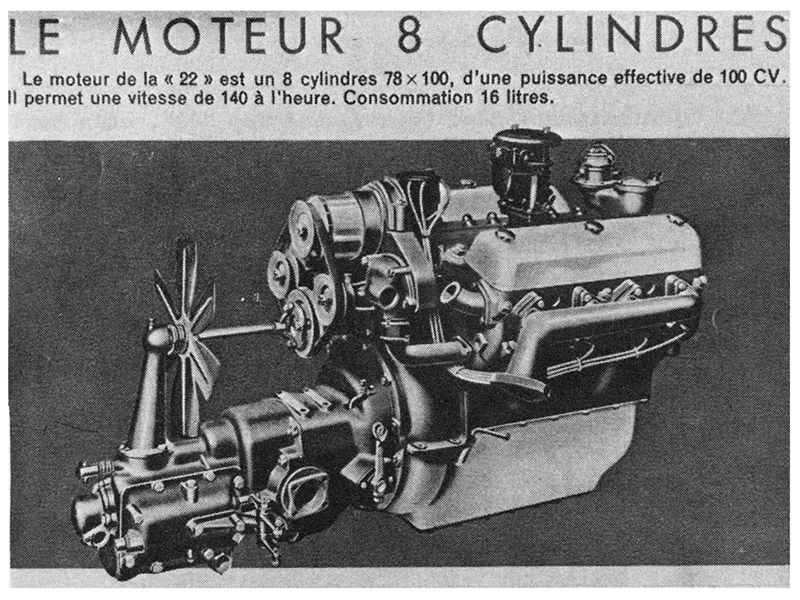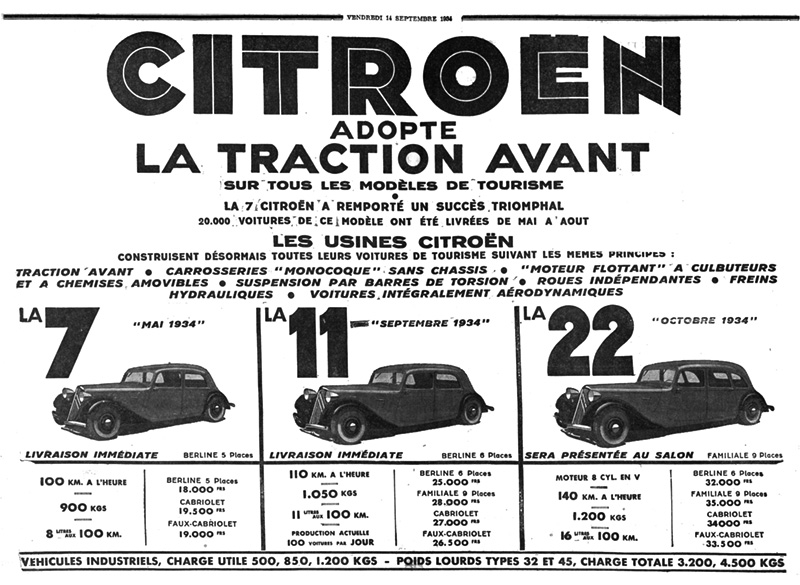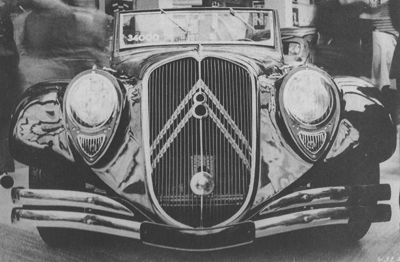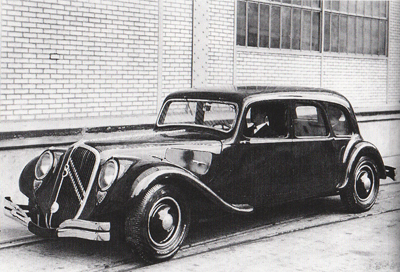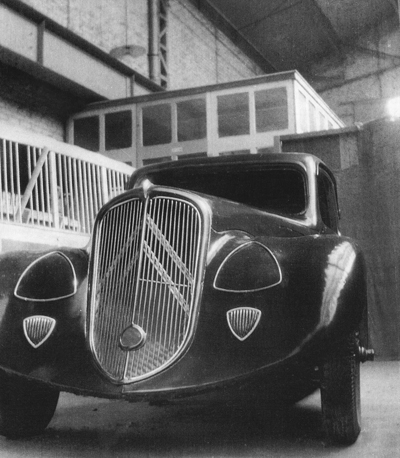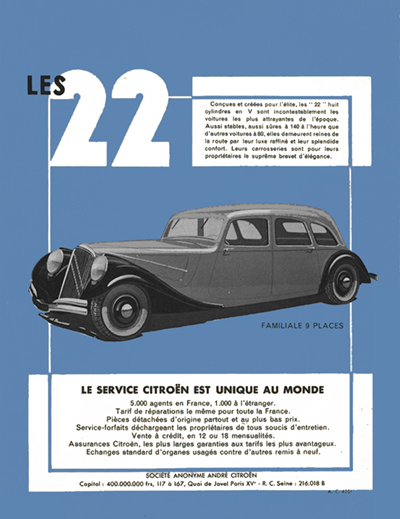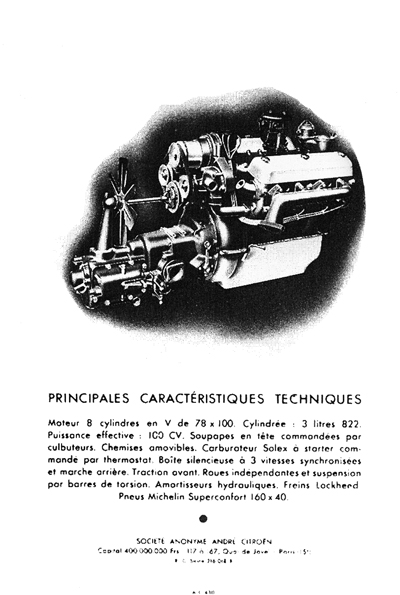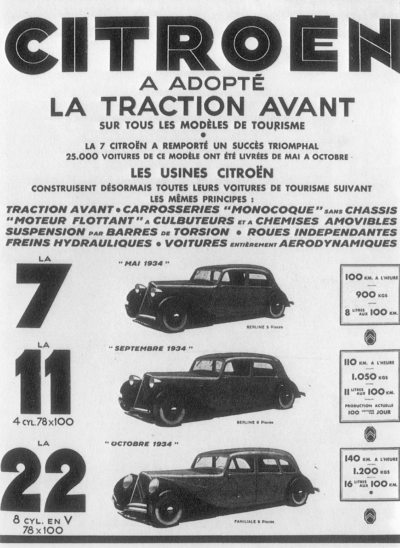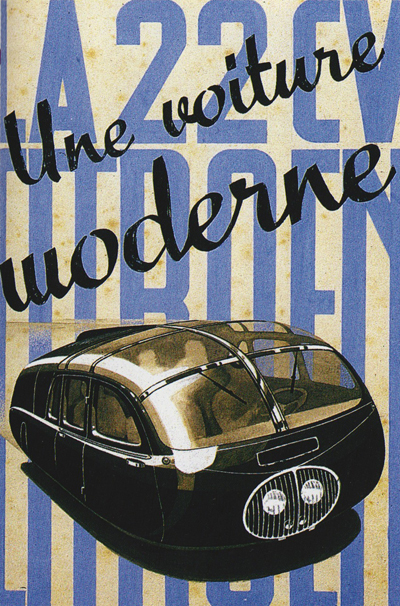|
|
 |
|
As
one
might conclude from the model designation, the 22CV
was a "double
11" - fitted with a V8 engine of 3.822cc capacity -
double that of the 11CV's
1911cc.
Early
prototypes were fitted with a Ford V8 .
Certainly
the models displayed at the Salon had sealed
bonnets.
Publicity
photos of the engine were allegedly of wooden mock
ups.
The
reasons for Michelin pulling the plug on this model
were apparently due to problems with the constant
velocity joints.
|
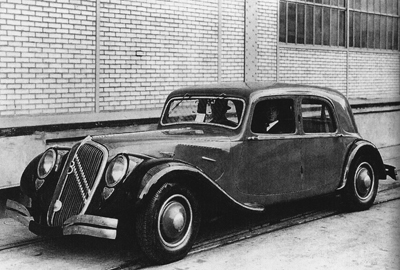 |
|
It
was claimed that the 22CV would have had a top speed
in excess of 140 kph (87 mph).
A
number of prototypes were constructed and once the
decision had been
made not to go into production, rather than destroy
them, they were
fitted with standard 11 CV four cylinder engines and
bonnet and wings
and sold as 11 CVs.
|
 |
|
A great deal of publicity material was produced for the
entire Traction Avant range - 7CV, 11CV and the 22CV.
|
 |
|
It was intended that an entire range of 22CVs would be
sold, comprising Berline, Conduite Intťrieure,
Familiale, Cabriolet and
Faux Cabriolet.
|
 |
 |
|
Above and below
pictures of the 1934 Paris Salon
|
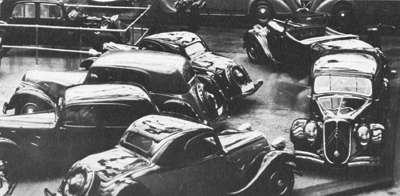 |
 |
 |
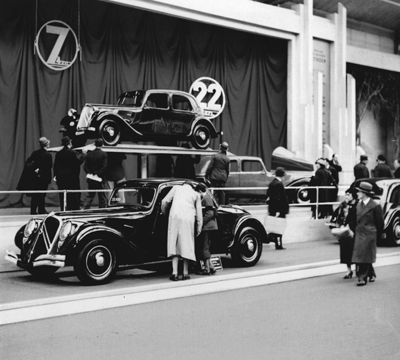 |
|
Left although the bonnets of the cars
shown at the Salon were sealed, this one photograph
exists which shows
the V8 fitted to the cabriolet.
None of the other pictures of the engine show it in
situ.
A
V8 engine was displayed alongside the car. It has been
suggested that
this engine was either a Ford V8 (which apparently had
been used for
test purposes) or a mock up.
|
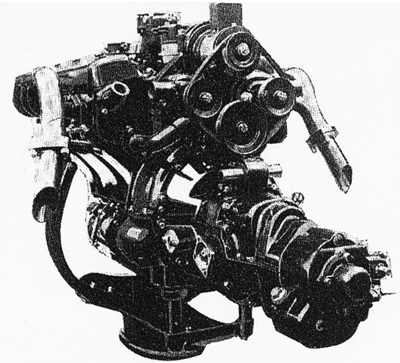 |
 |
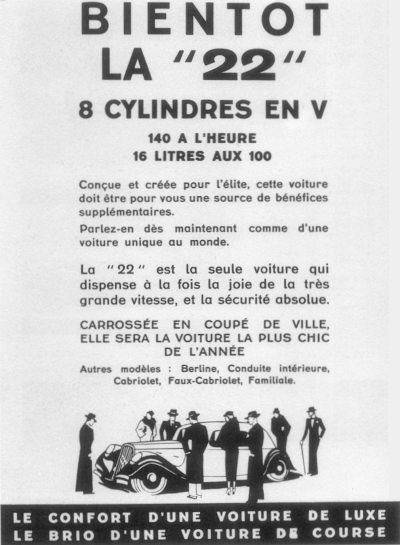 |
 |
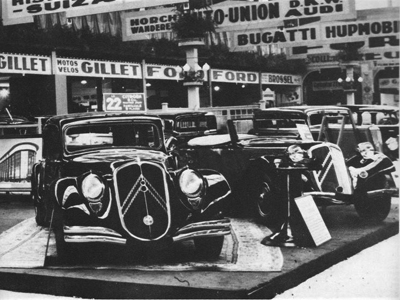
|
Rear wheel drive, rear-engined 22CV
|
|
Left
since 1934, the name CitroŽn has been indissolubly
linked to the
concept of front wheel drive and yet in 1936 the
company proposed a
rear wheel drive, rear engined MPV.
No
prototypes
have survived although there is some publicity
material
which shows a streamlined vehicle with a Kamm tail
and with headlamps
concealed behind a grill.
What
is not clear is why a rear engined vehicle needed a
grill unless it was purely for styling
purposes.
The
22 CV's V8 would have been the powerplant.
|
|


